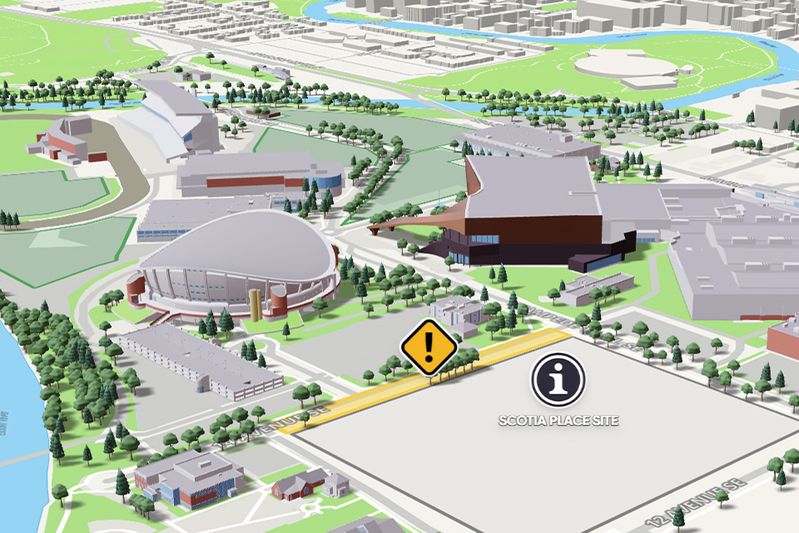Calgary Municipal Land Corporation launches new C+E Access Map

Reimagined Access Map to support Calgarians navigating The C+E amidst more than $1B in active construction projects and community-building investments.
Since CMLC launched The C+E Access Map in March 2022, more than 200,000 users – including visitors to Calgary Stampede – and Calgary Sport and Entertainment Corporation-hosted events – have used the interactive tool to navigate construction and access impacts when planning their trips to The C+E. Building on that momentum and in consideration of growth in The District, CMLC has reimagined The C+E Access Map to equip users with an even more robust and interactive map experience.
“We’re thrilled with how Calgarians have adopted The C+E Access Map over the past two years, whether they’re planning a trip to The District for date night, the next big Flames game or the 10 days of the Calgary Stampede,” says Thompson. “The C+E is unique in that it is both a district in development and an active destination for major culture and entertainment experiences. CMLC’s role as master developer is to ensure that we and our partners are delivering on our shared vision while maintaining access for the millions who visit the area every year. As we look ahead to the development still to come in The C+E – the construction of Scotia Place and the supporting District Infrastructure, and the four million square feet of future mixed-use residential and retail development – The C+E Access Map will continue to be an important resource for Calgarians and visitors alike.”
The new Access Map features a 3D experience similar to other digital tools with an improved ability to explore The C+E’s many destinations and experiences. Critically, the new map also provides a more detailed and intuitive navigation interface to help users plan their trips to the district with ongoing construction in mind.
Visit the new C+E Access Map at map.cedistrict.com, and be sure to check it regularly for construction and access impacts.



